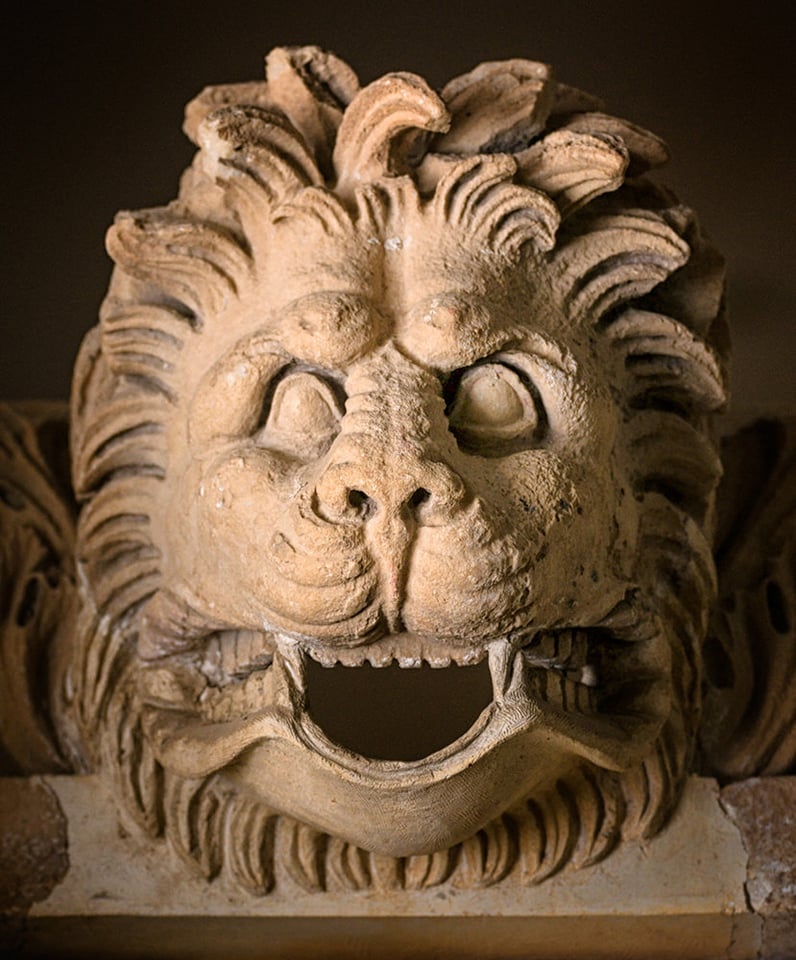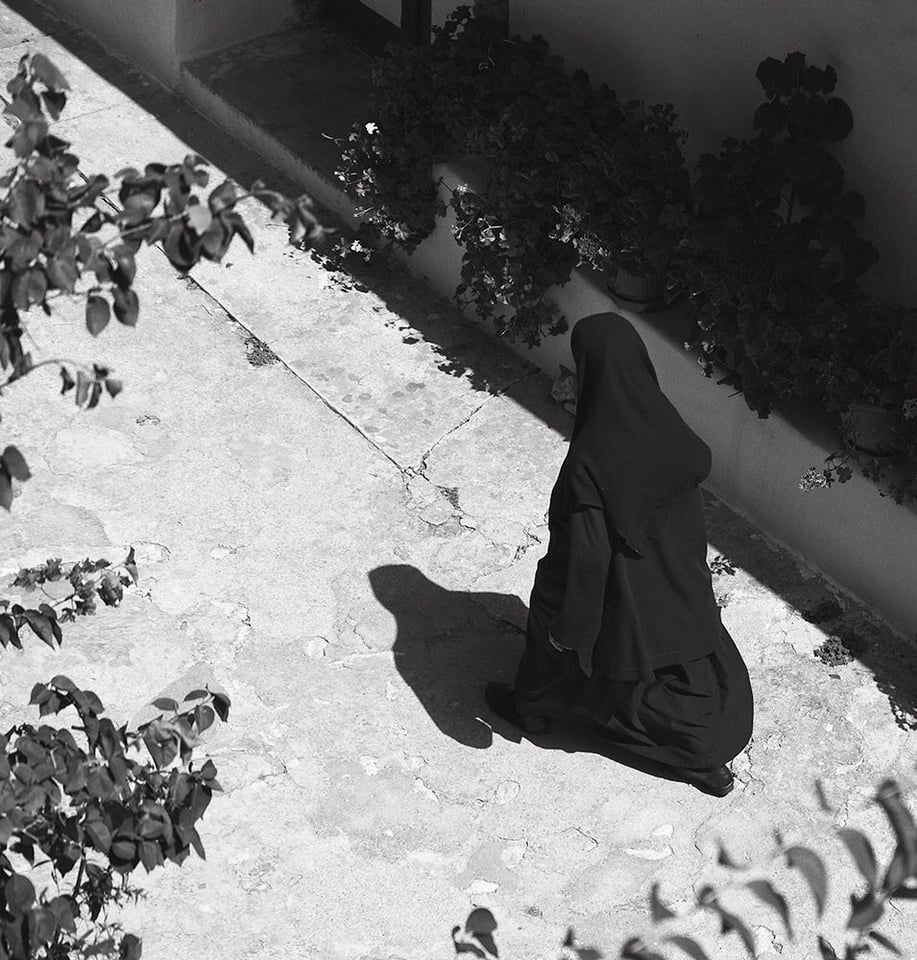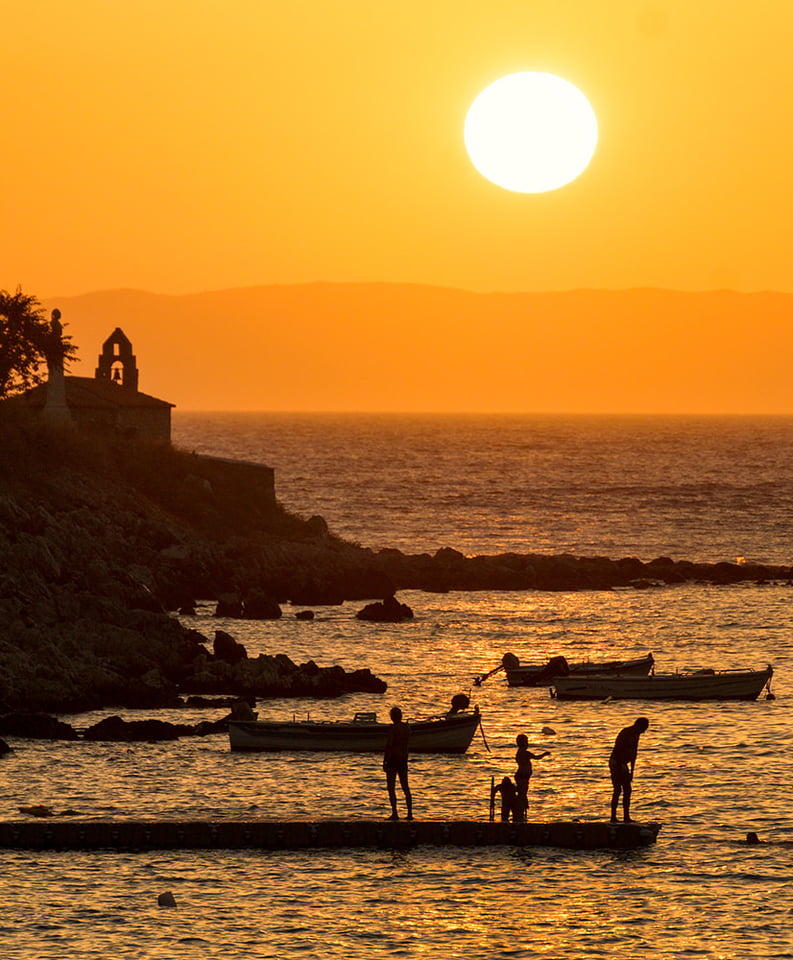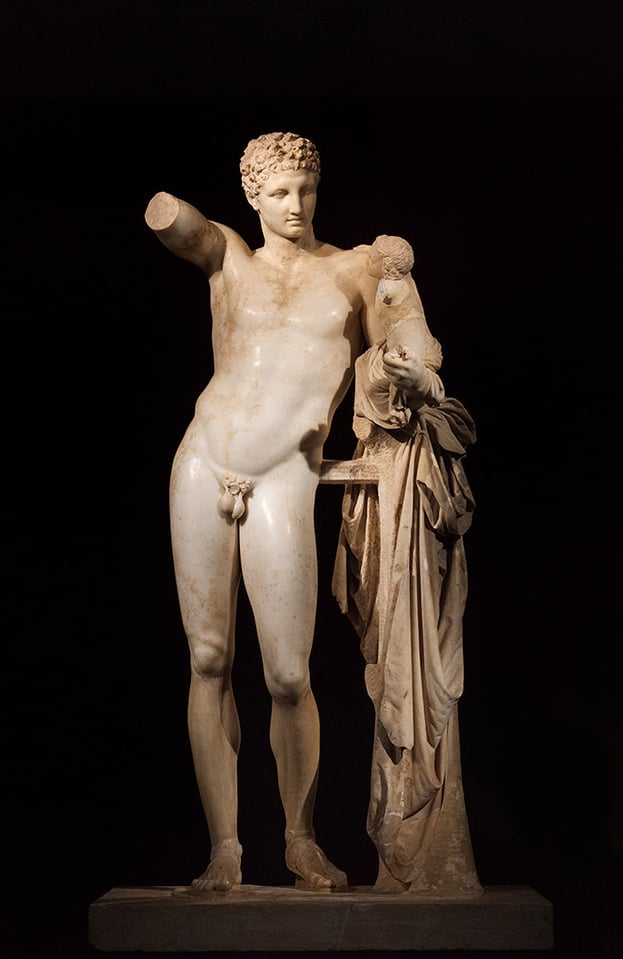Greece is one of those countries one must visit in their lifetime, thanks to its rich historic and cultural heritage, stunning landmarks and its natural beauty. Although there are many spots to check out in Greece, I will guide you through some of the most ancient and beautiful parts of this amazing country.

Table of Contents
1) Thermopylae
The blistering summer sun descended into the sea and with its departure a long and bloodshed day on the coastline of Eastern Greece came to an end. It is here that the Malian Gulf meets the Greek shore, which then stretches a mere 100 meters or so inland before it is greeted by mount Kallidromon forming what is known as the Thermopylae pass. In the year 480 B.C., the narrow pass was all that stood in the way of the invading Persian force from reaching Athens and conquering central Greece. And it is here that a small united Greek army of seven-thousand men under the command of King Leonidas of Sparta held off hundreds of thousands of Persians in the Battle of Thermopylae. The Greeks where resolute and withstood one Persian assault after another for over three days before a local tipped off the Persians about a secret passageway across the mountains from which they could out-flank the Greeks. In a final last stand and most probably in the hopes of covering for his retreating army, King Leonidas and a group of soldiers stayed behind to fight and perished in a heroic effort that has since been enshrined as a moment that stands to symbolize man’s courage against overwhelming odds.
Today, Thermopylae is just one of countless places that personify the rich mythology and history of Greece, and though there is very little left of the battle that transpired here, that is not the case in many other parts of Greece where one can still taste the essence of the past. Starting west from Athens into the Peloponnese and ending in central mainland Greece, the journey offers endlessly winding roads through mountain vistas, punctuated by the constant presence of a lifestyle that hearkens back to the days of Ancient Greece.
2) Corinth
Heading west out of Athens on Highway E94 you enter the Peloponnese after crossing the Corinth Canal, a 6.4 kilometer man-made slot that connects the Ionian Sea with the Aegean. Not far from the canal lie the ruins of the ancient city of Corinth. The city’s history tells of the importance of its geographic location. As goods were traded with countries all over the Mediterranean, Corinth was in a unique position, and had two harbors which allowed it to become a major power in Ancient Greece. Today, the site is very well preserved and offers a glimpse into what must have been the overwhelming experience of visiting the city in its heyday. The most prominent structure is The Temple of Apollo, built around 540 B.C.

Going off the highway, and following the winding EO Isthmou Archaias Epidavrou roadway for 60km leads to Epidauros. Though a small city in Ancient Greece, the prosperity brought by the Asclepeion (“healing temple” dedicated to the God Asclepius, the Greek god of medicine) made the city famous and led to the many ornate monuments dotting Epidauros. One such monument is the world renowned Ancient Theater, constructed in the 4th century B.C. The theater is one of the marvels of Ancient Greece and is famous for it’s near perfect acoustic qualities.
3) Epidauros

During the 4th and 3th century B.C. Epidauros became the center of healing for a large part of the Greek world. Visitors wanting to be healed would first make a sacrifice to the gods and undergo ritual purification. Then they would spend the night in the abaton (“sacred dormitory”). It was expected that the God himself would appear in their dreams, and the next day the priests would interpret the dreams and suggest a treatment. The visitors would also spend extensive time doing physical exercises at the site’s sports facilities and relax on the grounds in their path to better health.

4) Mystras
Heading south along E65 and then E961 to Sparta, you reach the ancient city after 2.5 hours drive. Sparta itself is an unremarkable modern city, though the ancient city’s acropolis remains a relic of the city’s illustrious past. Located on the edge of the imposing Taigetos Mountains and fed by the Eurotas River, it is obvious why the location was chosen. With plenty of water to grow crops and well protected by mountains, Ancient Sparta easily flourished. On the nearby mountain, perched on the steep slopes, stands Mystras, one of the last vestiges of the Byzantine Empire in the 14th century A.D.


5) Byzantine Churches and Fortress of Mystras
Nestled on the slopes of the Taigetos Mountains, the Byzantine churches and fortress of Mystras offer a glimpse into the art and culture that was prevalent during the latter days of the Byzantine Empire. Serving as the empire’s Despotate of Morea (Modern day Peloponnese) during the 14th and 15th century, Mystras experienced great prosperity and its churches remain partially active to this day, lending the the site a beautifully archaic aura.


6) Gytheio and Limeni
From here, the road south into the Mani Peninsula snakes through the heart of the Mediterranean. The roadside fruit stands along the road create a strong alibi for tasting the region’s famous olives along with other local delicacies all the while resting in the shade of centuries old olive groves. Gytheio, a beautiful town which has been overrun with tourists offers the gateway to the two main attractions of the peninsula; Limeni and Vatheia.
Hidden away in a small cove on the Mediterranean sea, the village of Limeni is what some may term a piece of paradise. With turquoise water on one side and a steep hillside on the other, the village sits right on the edge of the sea. Photographically, Limeni faces westwards, which means that it gets incredible sunsets as the sun descends right into the horizon line over the sea.


7) Vatheia
Further south at the tip of the Mani Penninsula lies the abandoned town of Vatheia. Made famous for its stunning seascapes and rolling hills that flower during spring, the town has been partially abandoned, giving it a ghostly ambiance. Both Limeni and Vatheia can be seen during the course of one day, starting out in Vatheia and spending the afternoon and sunset in Limeni.

8) Olympia
Our sights now shift to the northwest Peleponese, where Highway E55 takes us to the birthplace of the Olympics in the ancient city of Olympia. In its earliest incarnation, the games were part of a religious festival to honor the god-of-all-gods Zeus. Men competed in footraces every 4 years and the winners were heralded for their heroism. The site is immense and it can take a couple of visits to really explore it in its entirety. The accompanying museum is also phenomenal and an integral part of understanding Olympia, where you can find sculptures like the one below of Hermes and the Infant Dionysus from the 4th century B.C.

9) Delphi
Leaving the Peloponnese over the Gulf of Corinth near Patra, we return back to mainland Greece where highway E65 flows along the gulf’s northern shores. After an hour or so, the road shifts course and heads north into the mountains where it reaches Delphi. Located high in the mountains overlooking the gulf of Corinth, Delphi was the home of the Oracle (“a priestess consulted on important decisions throughout the ancient classical world”) and was made both wealthy and famous because of this. Situated beautifully on the side of a mountain, Delphi is a large site with many different ruins from different periods of Ancient Greece. The crown jewel is the Delphic Tholos (pictures below) which is the most beautiful and mysterious building in Delphi. The Tholos is an architectural wonder built with incredible feats of mathematics involving the precise calculation of ratios based on the golden number.

The location of Delphi sits at crossroads from which you can either return to Athens by going south-east or you can venture into the heart of north-central Greece to to a place where churches levitate on the tops of giant spires of rock.
10) Meteora
Meteora (literally translating to “middle of the sky”) is a UNESCO World Heritage site composed of six Greek Orthodox churches built on natural pillars of sandstone which rise from the plain below. The first monastery was constructed in the 14th century, while the rest were built during the following two centuries.

The monks chose to build the monasteries here because their secluded nature and hostile geography provided a natural defense from the outside world. From a photographic perspective you can go both very wide and try to emphasize the incredible geography or you can go with longer focal lengths and really isolate the churches. It is also a good place for back-lit sunsets and each church offers a unique feel during this time of the day.


From Meteora, it is a long 5 hour drive back to the capital city. With centuries of history and lore adorning it, Greece is a country that must be visited in one’s lifetime. With a Spanakopita in one hand and a camera in the other, hounded by the very same sun that tormented Leonidas and his men over 2,500 years ago, his sacrifice starts to make more sense. For there is something about this land that imbues your senses in a way that no other place can.

A super resource, thanks for all the effort! Great images. This has proved useful as I have added the small places I missed to our 3 month RV tour itinerary of mainland Greece. I also spotted ‘Dimitrios shipwreck’ north east up the peninsula coast, may be worth a trip for you?…”Dimitrios” Shipwreck
Βαλτάκι
goo.gl/maps/oXHSwa8g7BA2 Enjoy
Beautiful shots. The technical advice is going to come in handy in about a week. My wife and I are going to Athens, Mykonos and Santorini with two Canon 6D’s with a 28-105mm lens on one and a 150-600mm on the other. I’m bringing a wireless shutter release, a tripod, and my circular polarizer and variable ND filter.
Do you have any advice for shooting with a variable ND filter to increase exposure times. I’m thinking it might help if there’s large crowds at the various archeological sites.
Thanks
Dear Eddie,
Your lens selections seem quite ideal. It will offer you good all around coverage though carrying the 150-600 around all day might prove tiring in the Greek heat. I think I am the only one crazy enough to carry a 200-400 on one body and a 70-200 on another body, both hanging off my shoulders with a backpack with other gear on my back for long hikes… (pretty sure my back will thank me later when I get a bit older)
I have not played around with long exposures to get rid of the crowds. I do understand the wish to isolate the buildings, but I sometimes think the crowds, in the right constellation, can add to the atmosphere if done right. If there are large crowds to the point where I cannot get off one clean shot, I will just try to change tactics and emphasize on the more subtle details with longer focal lengths.
All the best,
Dvir
I hear what you’re saying. Concentrate on a fresco or sculpture with telephoto to capture high detail and wait for crowds to thin out. That requires patience. Something I (sometimes) have.
Actually, I was looking for advice as far as exposure times. My variable ND is from 1 to 9 stops and I can’t seem to find any type of table that lists how long an exposure at so many stops vs the UN-filtered exposure, to give an equal exposure in both cases. I’m able to bracket most of my shots, so all I’m really looking for is a ballpark to start my batting practice.
Then again…..it’s digital. I could always experiment. It’s not like it costs me any film.
Thanks…and by the way, I use a camera harness with the 28-105mm on my chest hook and my 150-600mm on my waist hook. I’m 55 and it’s the best $100 I’ve ever spent on photo equipment.
Your back will buy you flowers after a day long, two-camera shoot.
Eddie
Yes indeed it requires patience, but I think patience and perseverance will reward you in such a situation. Some of the photos you see above were timed in the right way to ensure that there are no people.
Well if you are looking for advice on exposure times. I would set up an experiment outside before your trip. Go to an area with some people, set up a tripod with the ND filter, and experiment with the different exposures and then see how these differing exposures impacted the movement of the people. I mean it seems quite obvious suggestion, but I have found that there is no better substitute then personal experimentation before a trip where you will be trying something new.
And yes, that harness will greatly help. I use good straps too, kind of just got used to lugging around all that gear. Though I have transitioned to using F-Stop backpacks for their better straps that make it much easier to go on long hikes.
All the best,
Dvir
Just got back from Greece on June 9th. What a beautiful country to photograph. I can see what you meant about patience paying off when working around large crowds. I ended up getting every shot I wanted to take, with the added bonus of allowing you extra time to play with composition, camera position etc. while waiting for your opportunity.
You might just have changed the way I take pictures. I shot approximately 3000 photos and from seeing the results, patience definitely pays off.
I’ve always been a “get in – get the shot – get out”, type of photographer. No more.
Thanks Dvir,
Great images of magnificent Greek landmarks. My wife and I will be visiting the area this summer, and I am so very anxious to have the right equipment and lens with me. I do not want to repeat a mistake I have so often made, that is to lug all my equipment. I am a Nikon person, camera and lens. I wanted to know what you would recommend for me to carry in a small sling bag or backpack.
Camera is D810. Lens 10-24, 28-300, 24-70, 70-200, 85.
Thank you
Dear Serge,
I am glad that you liked the article and the photos.
Indeed lugging all your equipment is not necessary. The two lenses I had on this particular trip was a 16-50 and 70-300 on two crop bodies.
I would probably go with a 16-35 and a 70-200 with an additional x1.4TC as a bare minimum kit, ideally with two bodies. That would give you the best overall coverage. Considering what you have, I assume the 10-24 is for a crop body so that is a good range for the crop body while you take the 70-200 on the full frame body. That would give you the most adaptable system and would allow you to cover all the most necessary focal lengths. If you have room for three lenses the 24-70 would be my third choice. It’s larger aperture could prove beneficial inside churches where the light is low.
Hope that helps a bit and if you have any more questions feel free to ask.
All the best,
Dvir
Thank you for sharing these beautiful travel photos. Really makes you want to go visit all those places.
Thank you for bringing back some wonderful memories. I visited Greece a few years ago and we drove around the Peloponnese for a good week in May. The weather was nicely warm but not too hot to ramble over tens of ancient sites with nobody there. The atmosphere was electric and awe inspiring and the locals so friendly. Definitely want to go back for another visit to capture more of the wonder that you have captured here
Dear Rosie,
I was there in August so the weather was quite warm. In places that are exposed like Mystras the midday sun can get quite difficult to bear but it adds to the atmosphere and vibrancy which is as you say, electric. I highly recommend going back for another visit!
All the best,
Dvir
Have been waiting years to see a post like this. Thanks a million ?
Dear Raj,
haha I am glad that I was able to offer such a post then!
All the best,
Dvir
Dvir, Your text shows that you have absorbed the charm and history of a place, and your lovely images are nicely seen. Work of that quality helps me to fill in the gap between interest in significant places and lack of the means to go to them.
Dear Art,
I am glad my text passes on my love for the country and my joy of visiting it and I am happy it helps fill the gap in that way.
All the best,
Dvir
Since the insecure masses are busy listing all their gear on the gear articles I’ll stop by here and say that these actual photos are great, regardless of what gear you used. Many thanx. :)
Dear Jimbo,
Haha yes I try to shy away from the gear talk as much as I can. I think it sounds like a cliche, but for most of the work I do, the gear I use does not matter in the least.
All the best,
Dvir
Outstanding article and accompanying photos. Thank you for sharing.
Dear Vinnie,
Thank you for the kind words!
All the best,
Dvir
Outstanding! Nicely done —- now on my bucket list. Thank you.
Dear Norm,
Thank you, Greece is indeed a place that must be on everyone’s bucket list.
All the best,
Dvir